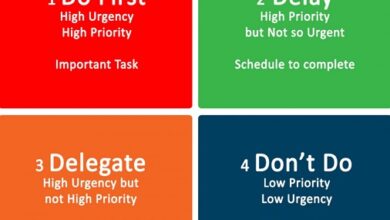Mindfulness in the workplace is a skill that can be developed to help with concentration, focus, productivity and quality of work life, capable of directly impacting the company’s development.
The quality of life at work has been increasingly the target of corporate programs aimed at professional development and well-being in the business environment . And that’s where mindfulness comes in.
Among the actions taken to improve productivity and focus on results is the concept of mindfulness, an idea that was born in Buddhism and has been spreading throughout the world.
Want to know more about it? Just keep reading this text, we’ll show you how to implement different mindfulness practices in your company and boost the team’s results.
What is mindfulness in the workplace ?
Mindfulness is the ability that we all have to experience experiences without pre-judgments , which allows for a more impartial analysis of each situation.
When we let go of what we believe in, we are able to develop more empathy for our co-workers, get in synergy with our team, and increase productivity at work without the stress of everyday life.
Simply put , mindfulness is a kind of full control over your thoughts .
No matter who, it is common to have automatic thoughts derived from internal conflicts or stimuli from the environment.
Such thoughts are perfectly natural. However, it is possible to train our mind so that they no longer get in the way of focus and productivity.
This is a subject that has captivated more and more people, as we are entering an era where personal care is a priority for everyone. It’s no wonder that the word of the time is self- care .
Even companies have woken up to the benefits of implementing practices that encourage mindfulness.
One of the most beneficial practices — and one adopted by large corporations — is mindfulness meditation .
It consists of stopping all your activities for two or three minutes and focusing only on that moment, leaving aside the pressure for deadlines, the phone calls and the accumulated work.
An example of this type of investment is Google‘s mindfulness program, called Search Inside Yourself .
The company uses Buddhist precepts to stimulate the search for mindfulness through a course offered since 2007.
How to achieve mindfulness in the workplace
Mindfulness is more of a practice than a state of mind. Even if you achieve the mindfulness proposed by Buddhists, it is necessary to always put this habit into practice .
Not letting yourself be carried away by automatic thoughts is something that comes with time and practice.
And it doesn’t have to be an arduous task, whenever the individual daydreams thinking about the future, for example, it is possible to realize what happened and then gently return to the present.
It is not indicated to stimulate feelings of guilt because you were not able to maintain focus for the entire period that had been proposed.
Mindfulness should be a light practice that needs to be actively included in the agenda, after all, without practice, it is impossible to achieve the desired results.
Meditation and breathing exercises are perhaps the best ways to develop mindfulness.
How to implement mindfulness exercises during working hours?
To successfully apply mindfulness in a business structure, it needs to be embedded in the organizational culture .
That is, it is a project that starts in the head and goes down to the members. But, after all, how to implement?
The most efficient formula is precisely Search Inside Yourself . As Google did, it is possible to create a series of classes and events on the topic in order to educate all employees who are interested in developing this skill.
Meditation classes, for example, should be held during working hours and can be divided into several classes. In this way, the company is not “abandoned”.
Three-minute exercises are enough to bring a huge number of benefits to employees and, consequently, to the company.
With this guide on how to implement mindfulness in the company, it is revealed that this is a very cheap program and that it does not need any initial investment to start .
Simple step by step to create a mindfulness program
- Introduce the concept of mindfulness and its benefits;
- demonstrate that it is a mental well-being practice and that it is not tied to religious principles;
- create classes and workshops on meditation and other mindfulness-related subjects;
- encourage the employee to perform the exercises in other environments.
Encouragement can come through an internal newsletter with tips on mindfulness exercises and how to do them at home.
Other actions can also explain in more detail how the practice brings better results.
The benefits of mindfulness for the workplace
A well-trained and peaceful mind is capable of achieving countless goals inside and outside the business environment.
Some of the benefits for companies that have installed mindfulness programs are:
- increase in creativity for problem solving;
- increased productivity and ability to concentrate;
- positive addition to the organizational climate ;
- improves conflict management;
- increased brain performance;
- increased well-being, quality of life and motivation;
- provides a more pleasant working environment;
- prevents serious mental illness (more on that later);
- greater capacity for discernment;
- improves interpersonal relationships and increases engagement;
- keeps the mind calmer in the face of stressful situations.
Positive impact in several areas
Stress, anxiety, depression. These diseases are the biggest cause of absence from work and already affect more than 300 million people worldwide, according to WHO (World Health Organization) data.
Among the causative agents are poor relationships with co-workers, excessive working hours , pressure for results and a bad organizational climate.
One of the ways to combat all these harms is to implement the practice of mindfulness at work , encouraging meditation, emotional balance and interpersonal relationships in the company.
Mindfulness meditation is also great for dealing with tense moments, such as a heated debate among staff or the loss of an important customer, for example.
It should be noted, however, that measures must be taken to eliminate the agents that cause these diseases.
Otherwise, the effects of mindfulness in the workplace will not be as satisfying.
Therefore, self-assessment should also be carried out by positions of great influence, creating a much more beneficial environment for everyone.
Mindfulness and focus on results
It is already more than proven that one of the positive effects of mindfulness in the corporate environment is precisely the increase in concentration, which results in greater productivity and efficiency of your team.
A study carried out at Harvard points out that the human being can only focus uninterruptedly on a task for 40 minutes, wasting up to 47% of useful time in distractions.
However, this can increase considerably with mindfulness practices, as discussed above.
The reduction of anxiety reduces dispersion and worry, consequently, there is a greater physical and emotional balance.
More relaxed, the worker is more willing to perform his tasks, improves interpersonal relationships and generates more results for the organization, both individually and collectively.




